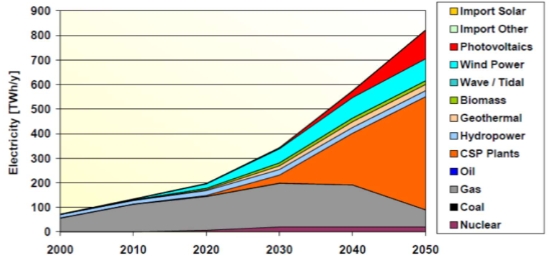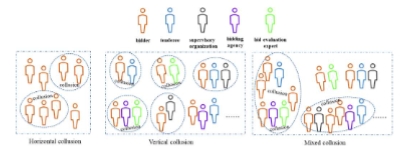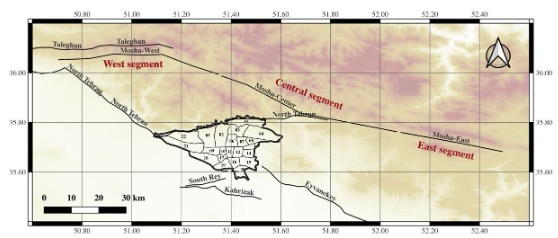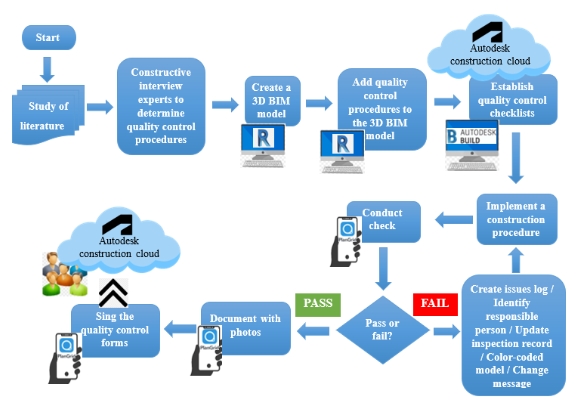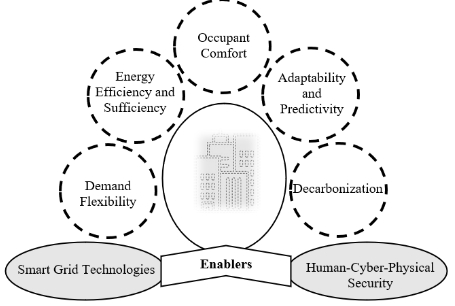Multivariate optimization of mechanically ventilated photovoltaic double-skin façade system for the cold conditions of composite climate zone
Abstract
Assessing the performance of a multi-storey building equipped with a mechanically ventilated photovoltaic-double skin façade (photovoltaic-DSF) system during cold weather conditions is crucial. This is because the demand for heating in buildings rises as outdoor temperatures decrease. This study formulates and verifies mathematical models to evaluate the energy performance of a building integrated with a mechanically ventilated photovoltaic-double skin façade (photovoltaic-DSF) system in Jaipur’s cold climate, which is part of India’s composite climate zone. The system was installed and observed during the winter months (December to February). The experimental design utilised a Taguchi L25 orthogonal array, considering variables such as air cavity thickness, air velocity, and photovoltaic (PV) panel transparency. Based on experimental findings, multiple linear regression analysis was used to predict three key performance metrics: The solar heat gain coefficient (SHGC), photovoltaic panel electrical output, and indoor daylight illuminance, all as influenced by the design parameters. The analysis of variance (ANOVA) confirmed the statistical significance of these relationships, and the model demonstrated a strong correlation with field measurements (R2 > 0.90), validating the accuracy of the developed mathematical correlations. The analysis reveals that a photovoltaic DSF system integrated into a multi-storey building, featuring a photovoltaic panel with 50% transparency, an air velocity of 5 m/s, and a 50 mm air cavity, achieves maximum energy performance under cold climate conditions in a composite climate. These insights can help in designing energy-efficient photovoltaic-DSF systems specifically optimised for winter conditions in composite climate zones.
References
[1]Preet S, Smith ST. A comprehensive review on the recycling technology of silicon based photovoltaic solar panels: Challenges and future outlook. Journal of Cleaner Production. 2024; 448: 141661. doi: 10.1016/j.jclepro.2024.141661
[2]Preet S, Bhushan B, Mahajan T. Experimental investigation of water based photovoltaic/thermal (PV/T) system with and without phase change material (PCM). Solar Energy. 2017; 155: 1104–1120. doi: 10.1016/j.solener.2017.07.040
[3]Preet S, Mathur S, Mathur J, et al. Energy characterization of forced ventilated Photovoltaic-DSF system in hot summer of composite climate. Energy and Built Environment. 2024; 5(5): 704–718. doi: 10.1016/j.enbenv.2023.05.008
[4]Saxena P, Das S. Analysis of Energy Saving Potential of a Residential Building Complex using Energy Conservation Building Code 2017. In: Proceedings of the 6th Annual International Conference on Architecture and Civil Engineering (ACE 2018); 14–15 May 2018; Singapore.
[5]Chen X, Yang H. A multi-stage optimization of passively designed high-rise residential buildings in multiple building operation scenarios. Applied Energy. 2017; 206: 541–557. doi: 10.1016/j.apenergy.2017.08.204
[6]Yao R, Costanzo V, Li X, et al. The effect of passive measures on thermal comfort and energy conservation. A case study of the hot summer and cold winter climate in the Yangtze River region. Journal of Building Engineering. 2018; 15: 298–310. doi: 10.1016/j.jobe.2017.11.012
[7]Pomponi F, Piroozfar PAE, Southall R, et al. Energy performance of Double-Skin Façades in temperate climates: A systematic review and meta-analysis. Renewable and Sustainable Energy Reviews. 2016; 54: 1525–1536. doi: 10.1016/j.rser.2015.10.075
[8]Kim D, Cox SJ, Cho H, et al. Comparative investigation on building energy performance of double skin façade (DSF) with interior or exterior slat blinds. Journal of Building Engineering. 2018; 20: 411–423. doi: 10.1016/j.jobe.2018.08.012
[9]Agathokleous RA, Kalogirou SA. Double skin facades (DSF) and building integrated photovoltaics (BIPV): A review of configurations and heat transfer characteristics. Renewable Energy. 2016; 89: 743–756. doi: 10.1016/j.renene.2015.12.043
[10]Lu L, Law KM. Overall energy performance of semi-transparent single-glazed photovoltaic (PV) window for a typical office in Hong Kong. Renewable Energy. 2013; 49: 250–254. doi: 10.1016/j.renene.2012.01.021
[11]Miyazaki T, Akisawa A, Kashiwagi T. Energy savings of office buildings by the use of semi-transparent solar cells for windows. Renewable Energy. 2005; 30(3): 281–304. doi: 10.1016/j.renene.2004.05.010
[12]Wang M, Peng J, Li N, et al. Comparison of energy performance between PV double skin facades and PV insulating glass units. Applied Energy. 2017; 194: 148–160. doi: 10.1016/j.apenergy.2017.03.019
[13]Chen M, Zhang W, Xie L, et al. Experimental and numerical evaluation of the crystalline silicon PV window under the climatic conditions in southwest China. Energy. 2019; 183: 584–598. doi: 10.1016/j.energy.2019.06.146
[14]Wang C, Ji J, Uddin MM, et al. The study of a double-skin ventilated window integrated with CdTe cells in a rural building. Energy. 2021; 215: 119043. doi: 10.1016/j.energy.2020.119043
[15]Preet S. A review on the outlook of thermal management of photovoltaic panel using phase change material. Energy and Climate Change. 2021; 2: 100033. doi: 10.1016/j.egycc.2021.100033
[16]Ioannidis Z, Rounis ED, Athienitis A, et al. Double skin façade integrating semi-transparent photovoltaics: Experimental study on forced convection and heat recovery. Applied Energy. 2020; 278: 115647. doi: 10.1016/j.apenergy.2020.115647
[17]Radmard H, Ghadamian H, Esmailie F, et al. Examining a numerical model validity for performance evaluation of a prototype solar oriented Double skin Façade: Estimating the technical potential for energy saving. Solar Energy. 2020; 211: 799–809. doi: 10.1016/j.solener.2020.10.017
[18]Yang S, Cannavale A, Di Carlo A, et al. Performance assessment of BIPV/T double-skin façade for various climate zones in Australia: Effects on energy consumption. Solar Energy. 2020; 199: 377–399. doi: 10.1016/j.solener.2020.02.044
[19]Preet S, Sharma MK, Mathur J, et al. Performance evaluation of photovoltaic double-skin facade with forced ventilation in the composite climate. Journal of Building Engineering. 2020; 32: 101733. doi: 10.1016/j.jobe.2020.101733
[20]Barbosa S, Ip K, Southall R. Thermal comfort in naturally ventilated buildings with double skin façade under tropical climate conditions: The influence of key design parameters. Energy and Buildings. 2015; 109: 397–406. doi: 10.1016/j.enbuild.2015.10.029
[21]Preet S, Mathur J, Mathur S. Influence of geometric design parameters of double skin façade on its thermal and fluid dynamics behavior: A comprehensive review. Solar Energy. 2022; 236: 249–279. doi: 10.1016/j.solener.2022.02.055
[22]Jankovic A, Siddiqui MS, Goia F. Laboratory testbed and methods for flexible characterization of thermal and fluid dynamic behaviour of double skin facades. Building and Environment. 2022; 210: 108700. doi: 10.1016/j.buildenv.2021.108700
[23]Peng J, Lu L, Yang H, et al. Comparative study of the thermal and power performances of a semi-transparent photovoltaic façade under different ventilation modes. Applied Energy. 2015; 138: 572–583. doi: 10.1016/j.apenergy.2014.10.003
[24]Wang Y, Chen Y, Li C. Energy performance and applicability of naturally ventilated double skin façade with Venetian blinds in Yangtze River Area. Sustainable Cities and Society. 2020; 61: 102348. doi: 10.1016/j.scs.2020.102348
[25]Srisamranrungruang T, Hiyama K. Balancing of natural ventilation, daylight, thermal effect for a building with double-skin perforated facade (DSPF). Energy and Buildings. 2020; 210: 109765. doi: 10.1016/j.enbuild.2020.109765
[26]Sharma MK, Preet S, Mathur J, et al. Exploring the advantages of photo-voltaic triple skin façade in hot summer conditions. Solar Energy. 2021; 217: 317–327. doi: 10.1016/j.solener.2021.02.020
[27]Zhang Y, Zhang Y, Li Z. A novel productive double skin façades for residential buildings: Concept, design and daylighting performance investigation. Building and Environment. 2022; 212: 108817. doi: 10.1016/j.buildenv.2022.108817
[28]Han J, Lu L, Peng J, et al. Performance of ventilated double-sided PV façade compared with conventional clear glass façade. Energy and Buildings. 2013; 56: 204–209. doi: 10.1016/j.enbuild.2012.08.017
[29]Peng J, Lu L, Yang H. An experimental study of the thermal performance of a novel photovoltaic double-skin facade in Hong Kong. Solar Energy. 2013; 97: 293–304. doi: 10.1016/j.solener.2013.08.031
[30]Inan T, Basaran T. Experimental and numerical investigation of forced convection in a double skin façade by using nodal network approach for Istanbul. Solar Energy. 2019; 183: 441–452. doi: 10.1016/j.solener.2019.03.030
[31]Pourshab N, Tehrani MD, Toghraie D, et al. Application of double glazed façades with horizontal and vertical louvers to increase natural air flow in office buildings. Energy. 2020; 200: 117486. doi: 10.1016/j.energy.2020.117486
[32]Jankovic A, Goia F. Characterization of a naturally ventilated double-skin façade through the design of experiments (DOE) methodology in a controlled environment. Energy and Buildings. 2022; 263: 112024. doi: 10.1016/j.enbuild.2022.112024
[33]Tao Y, Yan Y, Fang X, et al. Solar-assisted naturally ventilated double skin façade for buildings: Room impacts and indoor air quality. Building and Environment. 2022; 216: 109002. doi: 10.1016/j.buildenv.2022.109002
[34]Lin Z, Song Y, Chu Y. Summer performance of a naturally ventilated double-skin facade with adjustable glazed louvers for building energy retrofitting. Energy and Buildings. 2022; 267: 112163. doi: 10.1016/j.enbuild.2022.112163
[35]Jankovic A, Goia F. Control of heat transfer in single-story mechanically ventilated double skin facades. Energy and Buildings. 2022; 271: 112304. doi: 10.1016/j.enbuild.2022.112304
[36]Tao Y, Fang X, Setunge S, et al. Naturally ventilated double-skin façade with adjustable louvers. Solar Energy. 2021; 225: 33–43. doi: 10.1016/j.solener.2021.07.013
[37]Sotelo-Salas C, Escobar-del Pozo C, Esparza-López CJ. Thermal assessment of spray evaporative cooling in opaque double skin facade for cooling load reduction in hot arid climate. Journal of Building Engineering. 2021; 38: 102156. doi: 10.1016/j.jobe.2021.102156
[38]Tao Y, Zhang H, Huang D, et al. Ventilation performance of a naturally ventilated double skin façade with low-e glazing. Energy. 2021; 229: 120706. doi: 10.1016/j.energy.2021.120706
[39]Preet S, Mathur S, Mathur J, et al. Development of mathematical correlations to predict performance of forced ventilated Photovoltaic-DSF system in hot composite climate. Journal of Building Physics. 2024; 48(1): 31–66. doi: 10.1177/17442591241247327
[40]Bansal NK, Minke G. In: Climatic zones and rural housing in India. Forschungszentrum Jülich GmbH, Zentralbibliothek; 1995.
[41]Kumar S, Mathur J, Mathur S, et al. An adaptive approach to define thermal comfort zones on psychrometric chart for naturally ventilated buildings in composite climate of India. Building and Environment. 2016; 109: 135–153. doi: 10.1016/j.buildenv.2016.09.023.
[42]Agarwal P, Prabhakar A. Energy and thermo-economic analysis of PCM integrated brick in composite climatic condition of Jaipur - A numerical study. Sustainable Cities and Society. 2023; 88: 104294. doi: 10.1016/j.scs.2022.104294
[43]Kumar S, Singh MK, Mathur A, et al. Thermal performance and comfort potential estimation in low-rise high thermal mass naturally ventilated office buildings in India: An experimental study. Journal of Building Engineering. 2018; 20: 569–584. doi: 10.1016/j.jobe.2018.09.003
[44]National Fenestration Rating Council. In: NFRC 201–2014 Procedure for Interim Standard Test Method for Measuring the Solar Heat Gain Coefficient of Fenestration Systems Using Calorimetry Hot Box Methods. National Fenestration Rating Council; 2014.
[45]Zarei A, Liravi M, Rabiee MB, et al. A Novel, eco-friendly combined solar cooling and heating system, powered by hybrid Photovoltaic thermal (PVT) collector for domestic application. Energy Conversion and Management. 2020; 222: 113198. doi: 10.1016/j.enconman.2020.113198
[46]Wu JH, Yang LD, Hou J. Experimental performance study of a small wall room air conditioner retrofitted with R290 and R1270. International Journal of Refrigeration. 2012; 35(7): 1860–1868. doi: 10.1016/j.ijrefrig.2012.06.004
[47]Sharma MK, Preet S, Mathur J, et al. Parametric analysis of factors affecting thermal performance of photovoltaic triple skin façade system (PV-TSF). Journal of Building Engineering. 2021; 40: 102344. doi: 10.1016/j.jobe.2021.102344
[48]Sukhatme K, Sukhatme SP. In: Solar energy: principles of thermal collection and storage. Tata McGraw-Hill; 1996.
[49]Ravuri M, Reddy YSK, Vardhan DH. Parametric optimization of face turning parameters for surface roughness on EN 31 material using RSM and Taguchi method. Materials Today: Proceedings. 2021; 37: 769–774. doi: 10.1016/j.matpr.2020.05.816
[50]Gul M, Kalam MA, Mujtaba MA, et al. Multi-objective-optimization of process parameters of industrial-gas-turbine fueled with natural gas by using Grey-Taguchi and ANN methods for better performance. Energy Reports. 2020; 6: 2394–2402. doi: 10.1016/j.egyr.2020.08.002
[51]Sasmito AP, Kurnia JC, Shamim T, et al. Optimization of an open-cathode polymer electrolyte fuel cells stack utilizing Taguchi method. Applied Energy. 2017; 185: 1225–1232. doi: 10.1016/j.apenergy.2015.12.098
[52]Varun, Patnaik A, Saini RP, et al. Performance prediction of solar air heater having roughened duct provided with transverse and inclined ribs as artificial roughness. Renewable Energy. 2009; 34(12): 2914–2922. doi: 10.1016/j.renene.2009.04.030
[53]Roy RK. In: A primer on the Taguchi method. Society of Manufacturing Engineers; 2010.
[54]Kumar S, Tewari P, Mathur S, et al. Development of mathematical correlations for indoor temperature from field observations of the performance of high thermal mass buildings in India. Building and Environment. 2017; 122: 324–342. doi: 10.1016/j.buildenv.2017.06.030
[55]Türkmen İ, Gül R, Çelik C. A Taguchi approach for investigation of some physical properties of concrete produced from mineral admixtures. Building and Environment. 2008; 43(6): 1127–1137. doi: 10.1016/j.buildenv.2007.02.005
[56]Vyas M, Jain M, Pareek K, et al. Multivariate optimization for maximum capacity of lead acid battery through Taguchi method. Measurement. 2019; 148: 106904. doi: 10.1016/j.measurement.2019.106904
[57]Tewari P, Mathur S, Mathur J. Thermal performance prediction of office buildings using direct evaporative cooling systems in the composite climate of India. Building and Environment. 2019; 157: 64–78. doi: 10.1016/j.buildenv.2019.04.044
[58]Dehnad K. In: Quality control, robust design, and the Taguchi method. Springer Science & Business Media; 2012.
[59]Sinha R, Mathur S. Use of activated silica sol as a coagulant aid to remove aluminium from water defluoridated by electrocoagulation. Desalination and Water Treatment. 2016; 57(36): 16790–16799. doi: 10.1080/19443994.2015.1084536
[60]Yi H, Srinivasan RS, Braham WW. An integrated energy—emergy approach to building form optimization: Use of EnergyPlus, emergy analysis and Taguchi-regression method. Building and Environment. 2015; 84: 89–104. doi: 10.1016/j.buildenv.2014.10.013
[61]Mamourian M, Shirvan KM, Ellahi R, et al. Optimization of mixed convection heat transfer with entropy generation in a wavy surface square lid-driven cavity by means of Taguchi approach. International Journal of Heat and Mass Transfer. 2016; 102: 544–554. doi: 10.1016/j.ijheatmasstransfer.2016.06.056
[62]Mathur J, Bansal NK, Mathur S, et al. Experimental investigations on solar chimney for room ventilation. Solar Energy. 2006; 80(8): 927–935. doi: 10.1016/j.solener.2005.08.008
[63]Bhatnagar M, Mathur J, Garg V. Development of reference building models for India. Journal of Building Engineering. 2019; 21: 267–277. doi: 10.1016/j.jobe.2018.10.027
[64]Preet S, Sharma MK, Mathur J, et al. Analytical model of semi-transparent photovoltaic double-skin façade system (STPV-DSF) for natural and forced ventilation modes. International Journal of Ventilation. 2021; 22(2): 138–167. doi: 10.1080/14733315.2021.1971873
[65]Peng J, Curcija DC, Lu L, et al. Numerical investigation of the energy saving potential of a semi-transparent photovoltaic double-skin facade in a cool-summer Mediterranean climate. Applied Energy. 2016; 165: 345–356. doi: 10.1016/j.apenergy.2015.12.074
[66]Mateus NM, Pinto A, da Graça GC. Validation of EnergyPlus thermal simulation of a double skin naturally and mechanically ventilated test cell. Energy and Buildings. 2014; 75: 511–522. doi: 10.1016/j.enbuild.2014.02.043
[67]Ioannidis Z, Buonomano A, Athienitis AK, et al. Modeling of double skin façades integrating photovoltaic panels and automated roller shades: Analysis of the thermal and electrical performance. Energy and Buildings. 2017; 154: 618–632. doi: 10.1016/j.enbuild.2017.08.046
[68]Faraway JJ. In: Practical regression and ANOVA using R. University of Bath; 2002.
Copyright (c) 2025 Author(s)

This work is licensed under a Creative Commons Attribution 4.0 International License.





